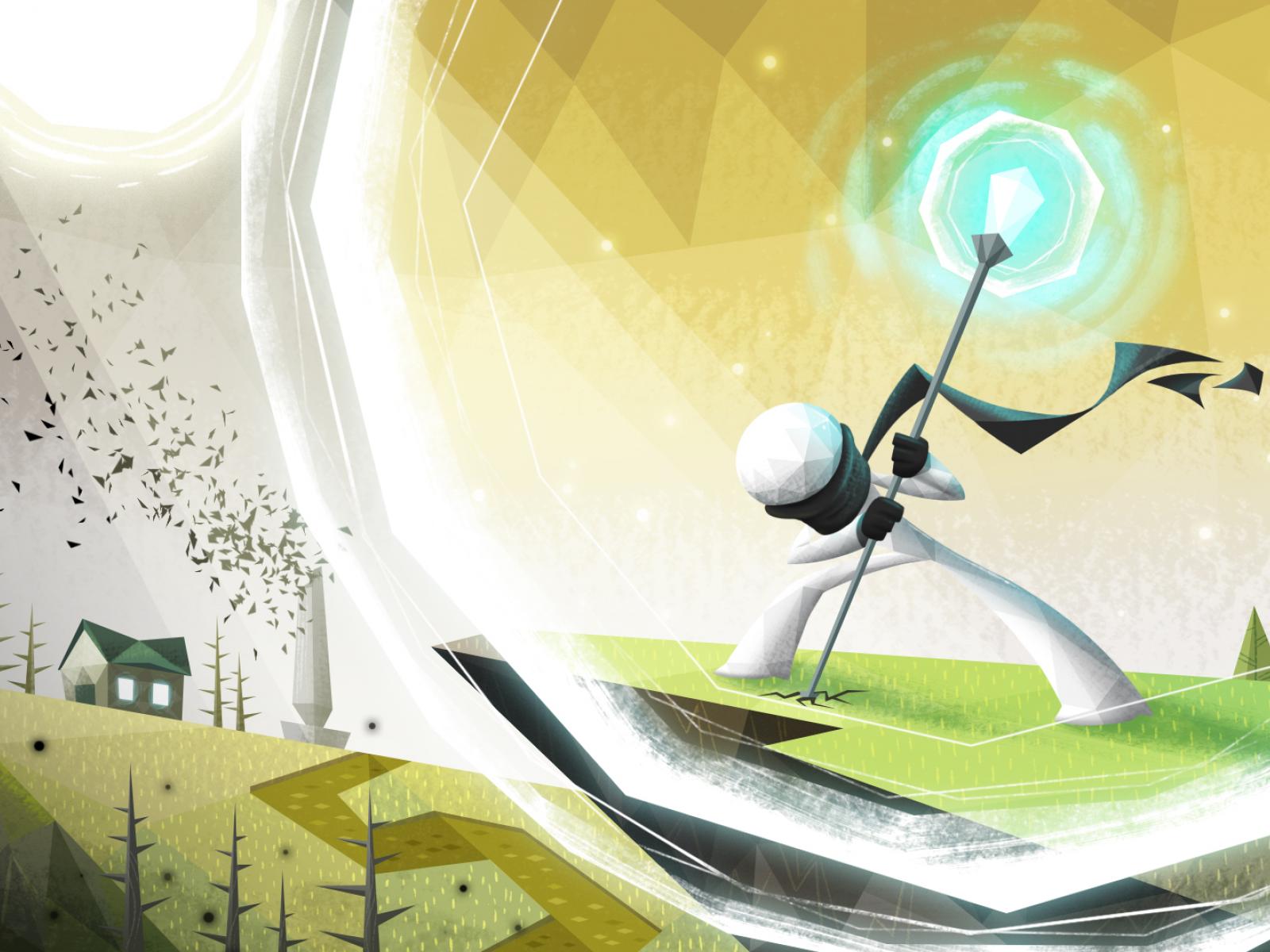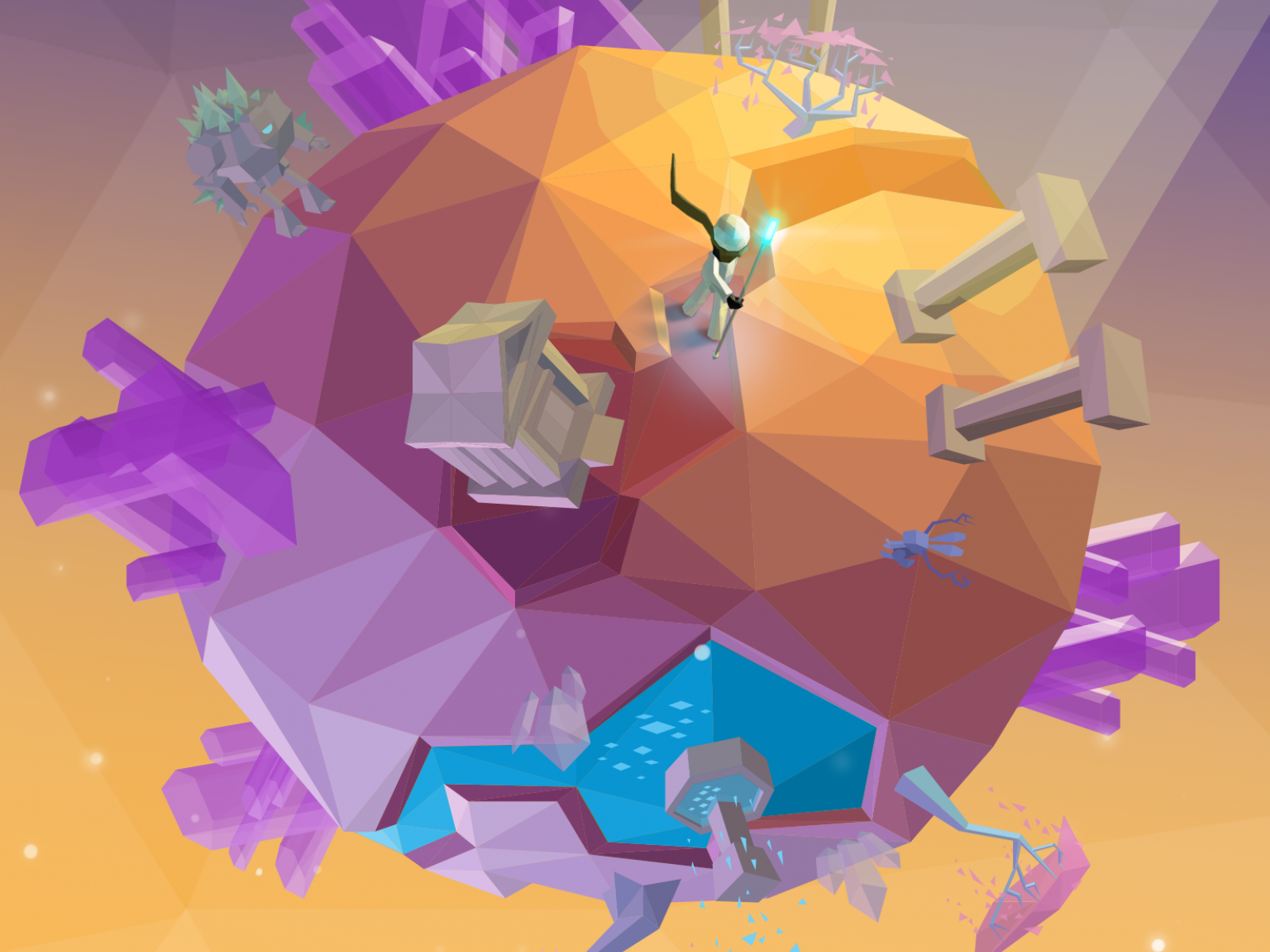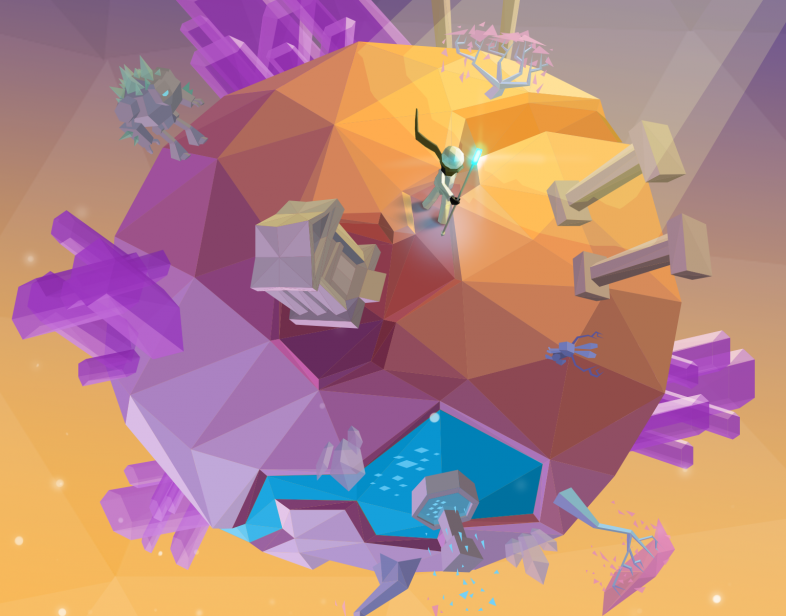An Overview Of Our Solution
The Path to Luma is a mobile app that gamifies energy production and encourages the adoption of renewable energy through education and engagement. The mobile game platform solves the problem of consumer apathy because it allows for broad consumer reach in terms of geography, language and age to address the universal climate impacts from the proliferation of fossil fuel generation. Since launching in 2015, the game has proven its success by earning 3.8 million downloads, 1.8 million hours of gameplay and 4+ star ratings in the Apple App store and Google Play store. Utilizing emotional appeals through aesthetically pleasing game play and a compelling story, The Path to Luma is a success story in behavior change supporting renewable energy and can continue to scale both in concept and existing assets with the support of additional funding and partnerships.
- Population Impacted: 3.8 million people and growing
- Continent: North America
Context Analysis
We operate in the context of consumer + energy relationships and mobile gaming.
There is a large consumer disconnect between energy generation and consumption and it’s a big problem because fossil fuel energy generation is the leading cause of climate change. A consumer knowledge gap slows and stifles consumer demand. Engaging consumers in the energy conversation is necessary for change. To date, most people just think about energy when the mail comes. A report from Accenture notes that consumers spend an average of 8 minutes per year annually thinking about their electricity bill; yet the average consumer spends 20 minutes per DAY on Facebook.
Mobile gaming continues to grow alongside global adoption of smart phones and internet access. Approximately ~5,250 games launch weekly in the Apple App Store and Google Play store. The average combined lifetime downloads for an app is ~100,000. To date, the Path to Luma has earned nearly 3.8 million downloads.
Describe the technical solution you wanted the target audience to adopt
Our target audience is broad: gender and geography agnostic, age 10 – 110, access to a smart phone.
Ultimately, we’d like our users to advocate for clean energy options wherever they get their electricity. Across the U.S., clean energy adoption has been a piecemeal effort prompted sporadically by federal and state energy policy, corporate influence, and consumer pressure. However, when constituents demand renewable electricity, policies can align to encourage that behavior from the electric utility. Examples include community solar programs in Massachusetts and Minnesota, green tariffs in Nevada, feed-in-tariff programs in Rhode Island and California, and mandatory Renewable Portfolio Standard targets across the country. More advocacy and engagement with legislators and policy-makers can accelerate this kind of positive change.
Type of intervention
Describe your behavioral intervention
The Path to Luma leverages “emotional appeals.” The game draws the consumer in through beautiful game design and original music composition. Gamification elements, that stimulate the craved dopamine release, carry through to the “puzzle design” architecture and “reward sequences” that transform the landscapes from barren to mystical and provide an incentive for completion.
The game employs key components of “stickiness” to the experience which locks the game in their memory. “Stickiness”, as studied by Chip and Dan Heath in “Made to Stick” includes 6 types of interventions. The Path to Luma most draws on the elements of “unexpected” and “story” thanks to the whimsical design aspects and the background of the game’s main character which the player becomes during the game.
The feedback loop for consumer adoption of taking action to learn more and implement renewable energy solutions comes in the form of game reviews in the app stores, fan mail we receive and the positive press coverage the game received connecting the dots between the game and consumer behavior.
As needed, please explain the type of intervention in more detail
You don’t have to take our word for it: “It’s a lovely game, reminiscent of the award-winning game Monument Valley, with a delightful low-poly aesthetic and splendid sound design ... Path to Luma also has a curious side effect: It makes you think about how clean energy technologies could provide for humankind’s future energy demands. But the game doesn’t have ads, doesn’t remind the player who funded it, and doesn’t try to sell them any product or service. Members of the … team say they just want players to know they can choose where their power comes from … As we see in both the real world and The Path to Luma, our small choices can bring big change.” - Amy Robinson, Forbes (audience: 23 million).
Describe your implementation
The Path to Luma connects consumers to energy, in both time and engagement, in a way that dwarfs traditional outreach: players of the game spend 300% more time actively thinking about energy than the average consumer. The result are consumers who want to seek out renewable energy solutions.
Proof of adoption is in game downloads, play time and reviews: 3.8 million downloads, 1.8 million hours of gameplay and an average 4+ star user rating. This work took hard work and luck. We focused on user experiencer above all. We also interviewed multiple developers, stayed involved throughout and beta tested. We intentionally kept the experience positive by not including time or life limits. To preserve the purpose and authenticity of the game, we kept it free of distractions such as ads and brand placement. We forged stakeholder relationships along the way resulting in an Apple Editor feature and 250 million earned, positive media impressions at launch.
The game has a low barrier to entry. The game was free for the first three years in the Apple App Store and is now only $.99. It remains free in the Google Play store and has never included ads or in-app purchases. The challenges are appropriate for elementary school age to centenarian. There is very little text, which though we translated into 5 languages, is instructional and not critical to playing the game well. A person only needs a smart phone with relatively updated software and memory storage to play.
The Path to Luma has greatly surpassed the success of an average mobile game.
Our primary obstacle came recently as the priorities shifted for the original game funder. So in early 2018 two of the game originators purchased the game and created a standalone LLC. We are now looking to ensure the future of the game and meet the needs and wants of our fans who want to see more from us.
External connections
Our most prominent partner includes our development team, Phosphor Games, who keeps the game top of mind in the gaming industry through their other project work. We are also members of 1% for the Planet which provides exposure and collaboration opportunities with like-minded companies across a variety of industries. Further, the game lends itself to multiple applications. For example, grade schools and universities can use the game to attract students to fields in the renewable energy space. Further, organizations that create the solutions in the game (ie. wind turbine manufacturers, solar panel installation companies, carbon capture engineers) can engage with potential buyers or partners in an unintimidating and inspiring fashion.
We also consider our fans our partners. Two examples of that feedback include:
“A clever message, crafted by an already established and well received dev team, making a point about not only conserving, but being philanthropic in their approach....that's high art right there folks. A rare bird in a world of herds.” - chief78 (TouchArcade Forums)
“I love this game! It has difficult puzzles but every time you accomplish something, you feel rewarded due to the stunning graphics and details … Also, I feel like I know more about eco-friendly energy now. I was educated about clean energy without reading from a boring article, instead I played an intricate game … It definitely deserves 5 stars.” - Boom Dots Lover (App Store User Review)
Who adopted the desired behaviors and to what degree?
Globally, The Path to Luma has earned 3.8 million downloads and 1.8 million hours of gameplay. Players of the game spend ~3.5x the amount of minutes that the average person spends thinking about energy in a year. This gaming experience sticks with a player and increases their knowledge and appreciation of renewable energy as a solution that betters the world.
Feedback in the form of game reviews also shows adoption of desired behaviors:
“Just finished your game and wanted to give you a warm congratulations - it's beautiful, delightful, inspiring, and the sound design is great. The whole experience is fantastic! Haven't seen a mobile game this pretty since Monument Valley … It's strange, even though it's a game, the idea of solving energy problems as a complex puzzle is rather empowering. Gives me confidence in the future.” - Amy (Fan mail)
How did you impact natural resource use and greenhouse gas emissions?
As a tech company, our natural resource and GHG emission impacts are minimal. Energy used by the servers of our development team to produce the game are not material given that they produce multiple games a year and didn’t add additional capacity in production of this game.
In addition, as a proof point to the purpose-driven effort of the game, we tied the formation of The Path to Luma LLC with membership to 1% for the Planet, pledging 1% of our revenues to environmental nonprofits. We are the first mobile game to achieve 1% for the Planet membership status.
What were some of the resulting co-benefits?
The game appealed to both gamer audiences as well as conservationists. Downloads of the game originally peaked in the U.S. but has a large global following, particularly in China. These crossover effects demonstrate the commonalities between people across interests as well as geographies when it comes to clean energy.
Sustainability
To keep the game live requires minimal ($5k-$10k) developer work to scrub the game for bugs that result from various mobile phone software updates. The game itself will not require updating on the content side as the renewable technologies present in the game are not specific to today’s industry standards as they were designed with an element of whimsy. Charging $0.99 on the Apple App store should cover this baseline expense. In this way, the game should be self-sustaining for the mid-term.
To engage new users and keep the interest of current fans, an infusion of funding (either from a sponsorship partner or funding such as from this program) would provide the ability to design new levels and possible incorporate new technologies.
Return on investment
The upfront cost was funded by the large energy company sponsor and is confidential.
Given that The Path to Luma broke through the noise of the approximately ~5,250 games that are launched per week across the Apple App Store and Google Play and that the average combined lifetime downloads for an app on the App Store and Google Play is ~100,000, our ROI was solid.
It’s worth noting that the upfront costs to build the game will never again be incurred. Like a second edition of a movie, the expense to build the design aesthetic and fan base are already established and can continue to be built upon vs. built brand new. Building additional levels runs in the mid double-digit thousands.
How could we successfully replicate this solution elsewhere?
To continue building on the success of The Path to Luma, scaling it includes new levels with new energy technologies such as microgrids, geothermal and cogeneration. The cost to add 3 – 5 new levels to the existing mobile game is about $30k.
Replicating the concept of building a game to drive awareness and action for other critical climate solutions, such as agriculture, would require:
Funding for game development and app launch: $200k - $750k
Experts to advise on the technology to include: $20k
Stakeholders to beta test the game for input: $5k
We have not seen many mobile games with a purpose-based initiative do well, primarily because the focus is not on the player experience. This is an easy obstacle to overcome with the right development partners and stakeholders, which we already know and have developed relationships.




